The Fables of Aesop and Others
1818
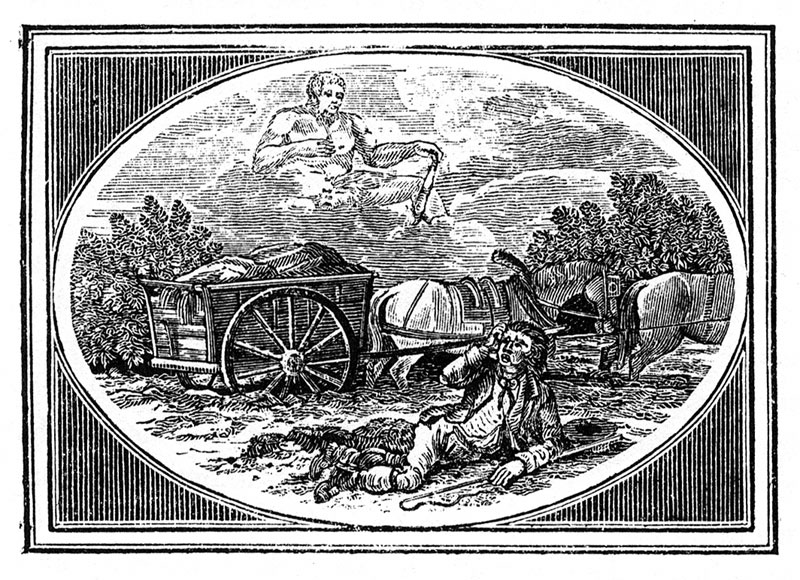
Hercules and the Carter, p. 37
'During a severe illness, with which I was visited in April 1812, [...] I determined, if I did recover, to go on with a publication of Esop's Fables [...] As soon as I was so far recovered as to be able to sit at the window at home, I immediately began to draw designs upon the wood of the fables and vignettes, and to me this was a delightfull task. In impatiently pushing forward to get to press with the publication, I availed myself of the help of my pupils, (my son [Robert], William Harvey and William Temple) who were also eager to do their utmost to forward me in the engraving business and in my struggles to get the book ushered into the world. Notwithstanding the pleasurable business of bringing out this publication, I felt it also an arduous undertaking. The execution of the fine work of the cuts, during the day light, was very trying to the eyes, and the compiling or writing the book by candle light in my evenings at home, together injured the optic nerve and that put the rest of the nerves out of tune, so that I was obliged for a short time, to leave off this intense application untill I somewhat recovered the proper tone of memory and sight again. I found in this book more difficulties to conquer than I had experienced with either the Quadrupeds or the Birds. The book was finished at press on the 1st October 1818 and was not so well printed as I expected and wished - the ink for such fine work being much too strong, black and thick. I am pleased to find the second edition, December 1823, better printed and better managed in other respects.'
[From Thomas Bewick My Life, edited by Iain Bain, p. 146-7 (spelling and punctuation as given in the original manuscript)]
The Fables were projected long before the engraving work was begun in 1811; some of the drawings may have been done by Johnson, who died in 1796. (Iain Bain has shown how the claim by Chatto and Jackson that Johnson designed all the drawings for the Fables is quite wrong.) The title-page clearly says 'Designs on Wood by Thomas Bewick'. In fact, one of Bewick's letters acknowledges the work done by the apprentices in cutting the blocks, but it meant that he had to take greater care to fill in the detail of the drawings, and supervise the work of the 'boys', making necessary changes to the blocks as he thought fit before considering them finished. There are various ancestor works to this collection, especially Samuel Croxall's book of the same title published in 1722, which was very well known to Bewick. It seems clear that Bewick borrowed compositional ideas from Croxall. Despite such influence and the notable contributions of his son Robert (now his partner) and the apprentices William Harvey and William Temple, the work remains Bewick's in both essence and impact.
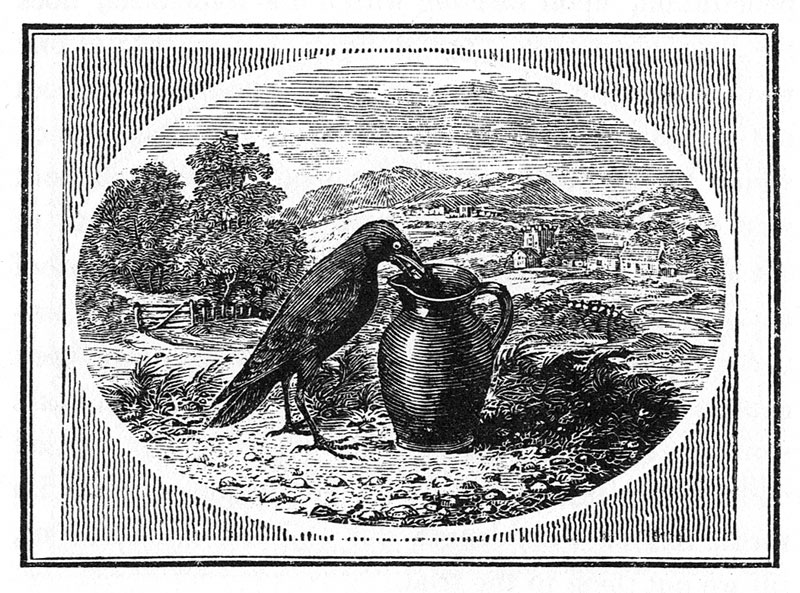
The Crow and the Pitcher, p. 63.
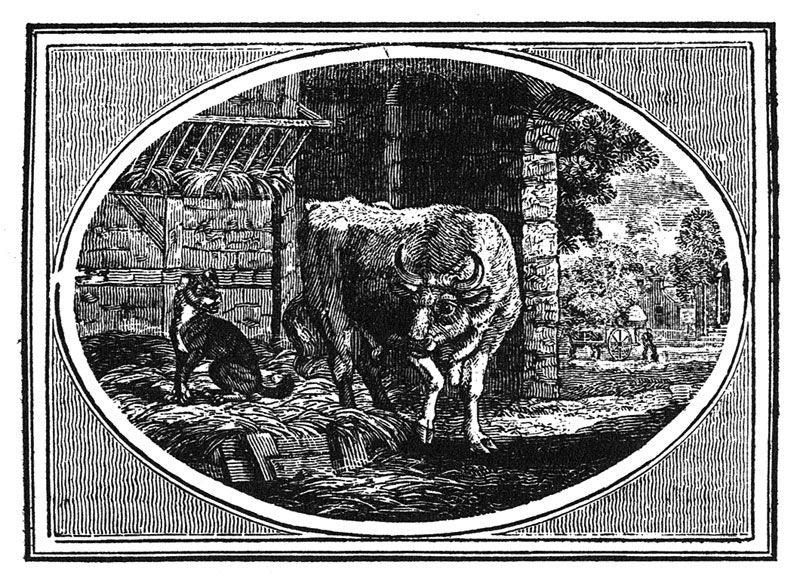
The Dog in the Manger, p. 77.
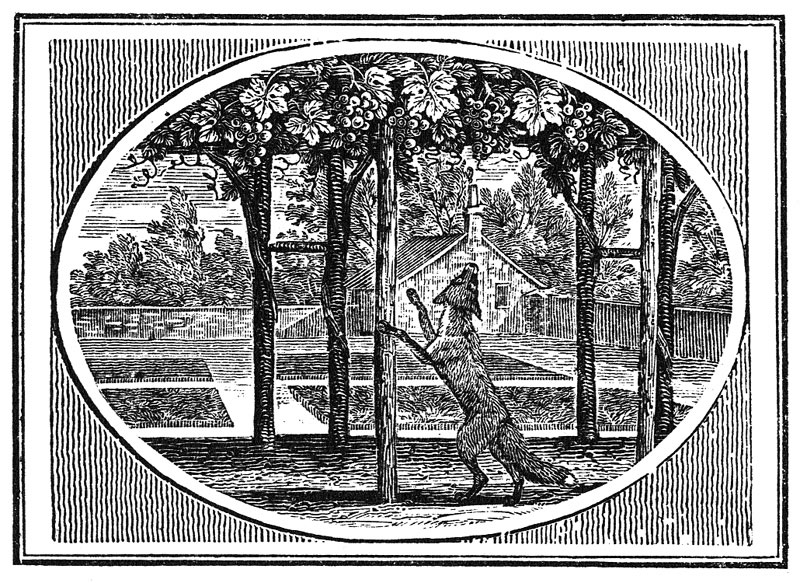
The Fox and the Grapes, p. 167.
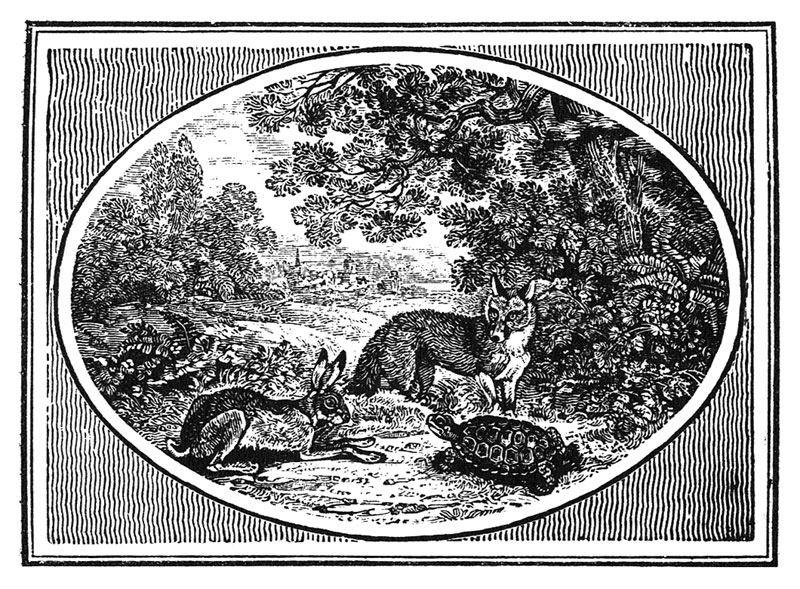
The Hare and the Tortoise, p. 221.
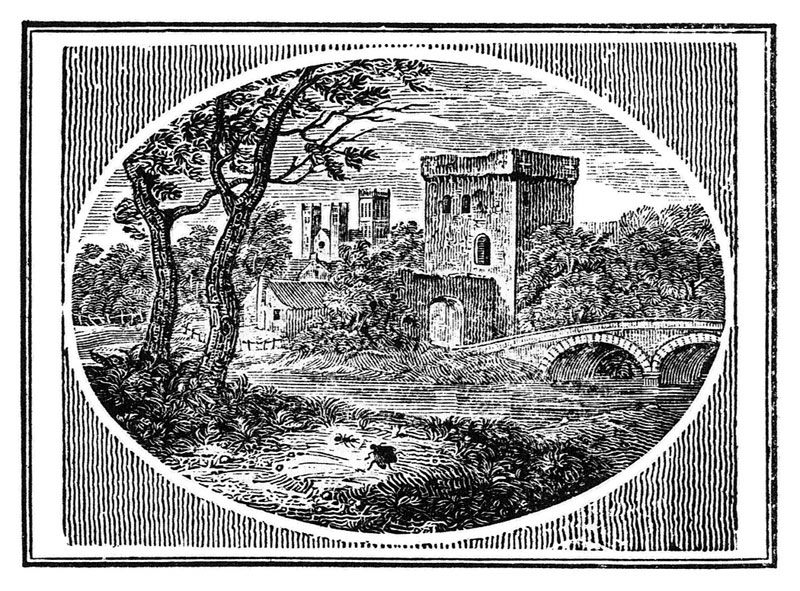
The Ant and the Fly, p. 269